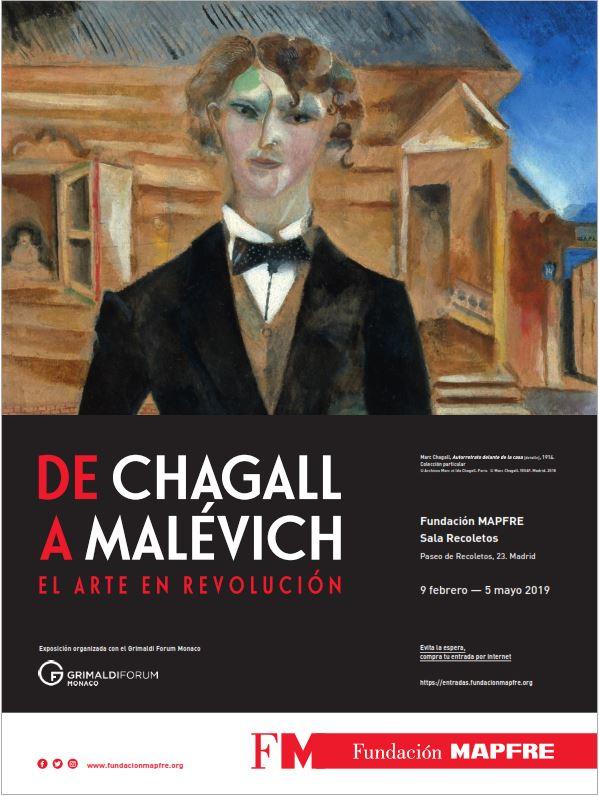The exhibition has been produced by the Fondation MAPFRE in collaboration with the Grimaldi Forum Monaco, which created in 2015 the original concept.
The From Chagall to Malevich: Art in Revolution exhibition brings together major works by artists who broke with the established models at the beginning of and during the twentieth century and anticipated modernity in a way that had never been seen before in Russia.
In this sense, they became precursors and introduced a new form of seeing, conceiving and depicting reality while in Paris as in Berlin, Moscow or St Petersburg what still prevailed was an academic style that satisfied young artists less and less. With the emergence of electricity, the railway, the motor car and the new forms of communication that led to a completely new language, artists demanded that art advance in the same fashion by drawing inspiration from these new rhythms and ways of life.
In 1898, in What is art? the Russian writer Leo Tolstoy expounded his ideas about his times and the future. He advanced the idea that the artists of the future would not belong as today to a determined class of society; all those who were capable of artistic creation would be artists. “The forms of art will be such as will be open to everyone”.
Under Napoleon III, in 1874, the Salon des Refusés in Paris was already showing new styles and the concerns of Impressionist painters who wanted to transform painting into a new paean to freedom. Unknown names were beginning to emerge that are today closely associated with a wealth of discoveries that marked the beginning of the twentieth century in the field of literature, music and dance but also in the visual arts. Sounds, words, forms… All the preconceived ideas were questioned at the time as innovation began to chip away at the rigid and archaic society.
There were many Russian artists who, at the beginning of the twentieth century, travelled to France in the same way that many French artists looked to eternal Russia in search of new aesthetic stimuli. There was a fruitful exchange of ideas, and the artists mutually influenced each other, and this in turn led to the emergence of schools and movements that concentrated all the energy and creative wealth of the early years of the new century: Impressionism, Cubism, Futurism, Cubo-Futurism, Rayonism, Suprematism and Constructivism; all those forms of art that had been hitherto unknown now had a name.
This exhibition, whose title already suggests artists of the significance of Malevich, also includes works by twenty-seven other great artists: Natalia Goncharova, Lyubov Popova, El Lissitzky, Jean Pougny, Alexander Rodchenko and more. The exhibition is complemented by an illustrated catalogue containing essays by the curator Jean-Louis Prat, Eugenia Petrova and Jean-Claude Marcadé, in addition to biographies and a chronology by Caroline Edde.
